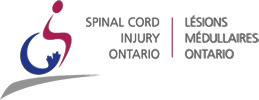Toronto Spinal Cord Injury Lawyers
Spinal cord injuries almost always result in significant disabilities, making it nearly impossible to live life as planned. Activities such as sports, walking a dog, and other basic life tasks are often no longer possible for those who sustain spinal cord injuries. These injuries can occur for numerous reasons, many of which are caused by major accidents such as car accidents, slip and falls, and sports injuries. Spinal cord injuries are difficult to deal with for everyone involved, and when the accident was not the fault of the injured it is unfair for them to face the consequences alone.
At Mazin & Associates, PC, we understand that victims of spinal cord injuries need more support than the bare minimum settlement that many insurance agencies attempt to get away with. We strive to ensure that our clients receive the highest amount of compensation possible, whether it is from the at-fault party or the insurance provider. Call our Toronto spinal cord injury lawyers at (416) 625-2122 to learn more about our outstanding legal representation.
Types of Spinal Cord Injuries
Spinal cord injuries come in many forms and types, each severely impairing in their own way. Below, we outline common spinal cord injuries and their possible effects.
Paraplegia
Paraplegia is the most common type, accounting for nearly 52% percent of all spinal cord injuries. Paraplegia occurs when someone injures the spinal cord below the cervical region and faces a loss of sensation in the legs and lower trunk as a result. Specifically, injuries to the thoracic, lumbar, or sacral nerves can cause paraplegia. This loss of control of the lower half creates countless additional complications, such as reduced bowel, bladder, and sex functions.
Usually, a spinal cord injury below the cervical spine will cause paraplegia, as opposed to quadriplegia. Of the 33 vertebra along which the spinal cord runs, only seven of them are in the cervical region. When speaking of paraplegia, the range of paralysis involved can be quite varied depending upon the level where the cord was injured, as well as the severity of the injury and specific part of the cord damaged.
Paraplegia spinal cord injury cases vary from partial paralysis of the leg, causing loss of sensation and impairment of motor function, to full paralysis of legs, trunk, and abdomen, all the way to the upper chest. Most spinal cord injury paraplegics will have full use of their arms and hands, and internal organ complications, if any, are generally limited to the bowel and bladder area, as opposed to quadriplegics who may have difficulty breathing and with other organs.
At the very bottom of the spinal cord, in the lower lumbar and sacral regions, the spinal cord fans out into a shape reminiscent of a horse’s tail, which gave rise to its scientific name as the cauda equina. Damage to this area may be termed paraplegia or cauda equine syndrome. In some cases, where the damage is not too severe, these nerves may grow back, with accompanying recovery of function.
Quadriplegia
Quadriplegia also affects a large amount of spinal cord injury victims. Injuries to the cervical spine may cause quadriplegia, also known as tetraplegia, which is paralysis of all four limbs or the entire body below the neck. Quadriplegics typically have little to no control of their entire body from the neck down. These individuals often lose control of their chest muscles and diaphragm, requiring a ventilator just to continue normal breathing. Spinal cord injuries create numerous secondary medical conditions beyond paralysis, some of which include:
- Cardiovascular Disease
- Deep Vein Thrombosis (DVT)
- Bladder and Bowel Dysfunction
- Hyperthermia and Hypothermia
- Vascular Dysfunction
- Postural Hypotension
- Osteoporosis and Fractures
These other severe medical consequences, coupled with paralysis, leave those with spinal cord injuries with a lifetime of medical complications. The spinal cord is one of the most vital parts of the human body and, unfortunately, injuries to the spinal cord are often life changing.
The degree to which body function is affected depends upon at what level along the spine the injury occurs. If the cord is injured at C1, C2, or C3, there may be complete paralysis of the entire body from the neck down, although some amount of head and neck movement may still be possible. A person with paralysis of muscles in the chest and diaphragm will need a ventilator to assist in breathing. At the C4 level and below, the injured person is sometimes able to breathe without a ventilator.
Spinal cord injuries at C5, C6, or C7 may inhibit function in the wrist and hand, hand, or fingers, respectively. The head and neck should have full mobility, with good shoulder movement available as well. At C7 and C8, limited movement in the hands and fingers will allow for more independence in self-care and mobility, with the use of adaptive devices and assisting technology.
Incomplete Spinal Cord Injuries
In some situations, incomplete spinal cord injuries can lead to certain syndromes. The type of syndrome frequently depends on which part of the spinal cord is damaged. Below are four syndromes that can result from an incomplete spinal cord injury.
- Anterior Cord Syndrome: Damage towards the front of the spinal cord can leave a person with a lack of or impaired ability to sense pain, temperature, and touch sensations below their level of injury. However, in some instances pressure and joint sensation may be preserved, and it is possible for some people with this injury to later recover some level of movement.
- Central Cord Syndrome: When the damage is in the center of the spinal cord, this typically results in loss of function to the arms, although some leg movement may be preserved. There may also be some control over the bowel and bladder. It is possible for some recovery from this type of injury, usually starting in the legs, and gradually progressing upwards.
- Posterior Cord Syndrome: Damage towards the back of the spinal cord may leave the person with good muscle power, pain, and temperature sensation. However, he or she may experience difficulty in coordinating limb movement.
- Brown Sequard Syndrome: When damage is towards one side of the spinal cord, this causes impairment or loss of movement to the injured side, although pain and temperature sensation may be preserved. The opposite side of injury will have normal movement, but pain and temperature sensation will be impaired or lost.
We understand the needs of someone with a spinal cord injury. Determining the best treatment and finding the funds to pursue the recommended treatments can be overwhelming without a specialized spinal cord injury lawyer. Our caring staff and experienced spinal cord injury lawyers become your partners during this difficult time after a spinal cord injury has occurred and help clear the confusion. We work closely with top experts including medical professionals specializing in spinal cord injuries, present and future care experts, specialized accountants, and leaders in the field of medical rehabilitation. We determine what is best for each client with a spinal cord injury on an individual basis, and give you confidence during this unsettling period.
Contact a Spinal Cord Injury Lawyer
Our Toronto spinal cord injury lawyers strive to ensure that insurers recognize that our client needs a much higher level of support and care than the bare minimum most insurance companies are willing to support. Our goal is to determine the lifetime costs associated with a spinal cord injury and then seek full compensation from the responsible party. We will be there for you to address your hopes and concerns, using clear language and frequent updates. Mazin & Associates, PC’s spinal cord injury lawyers will become your strong advocate and advisor, striving for the best monetary result possible for you and your family.
If you or someone you know sustained a spinal cord injury, contact Mazin & Associates, PC for a free consultation. Our mission is to recover the highest possible compensation for our clients’ suffering. Success often requires using our large network of experts to determine lifetime costs of the injury and determining the responsible party. Call our office at (416) 625-2122 to speak with a dedicated legal professional.







